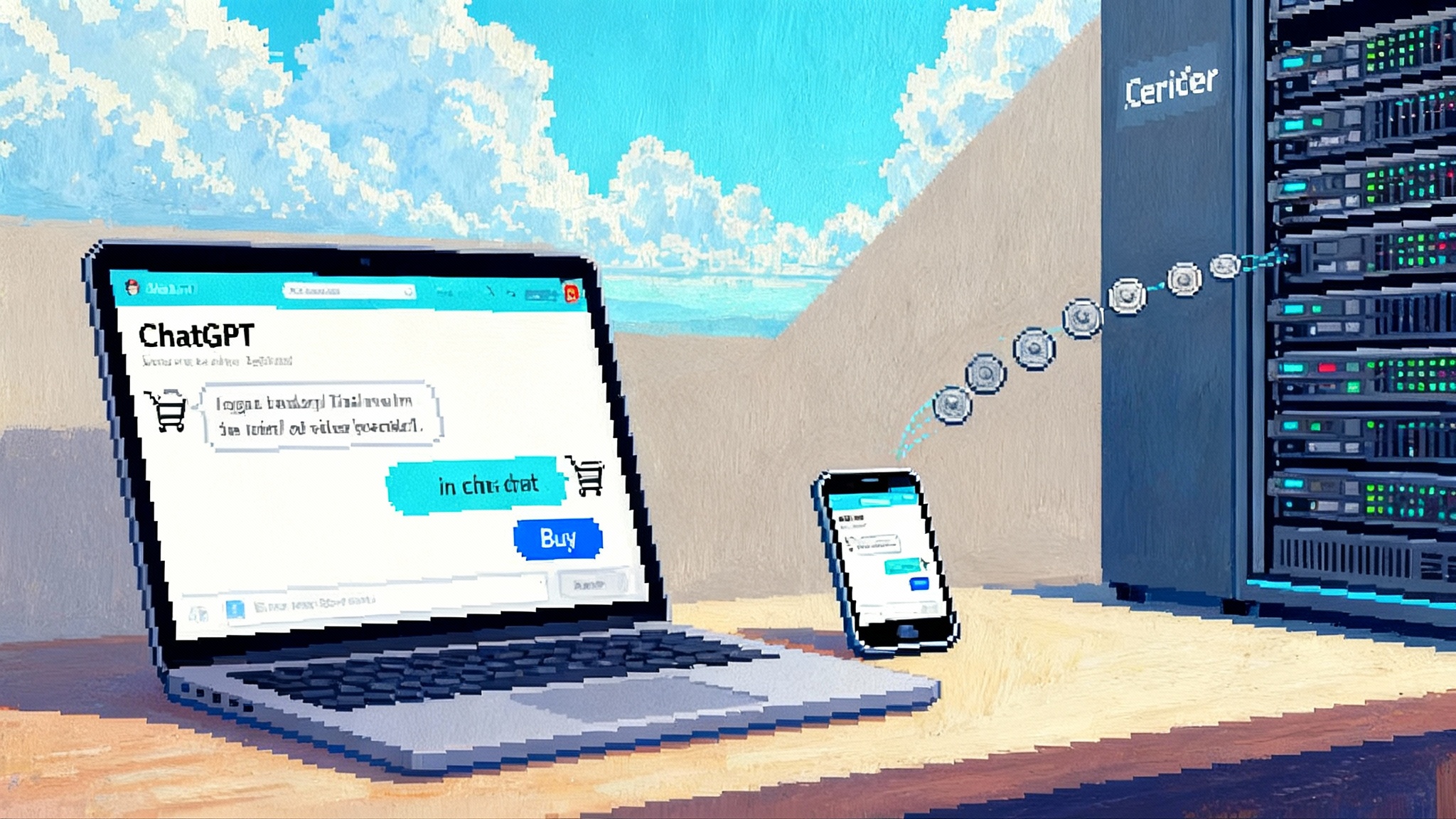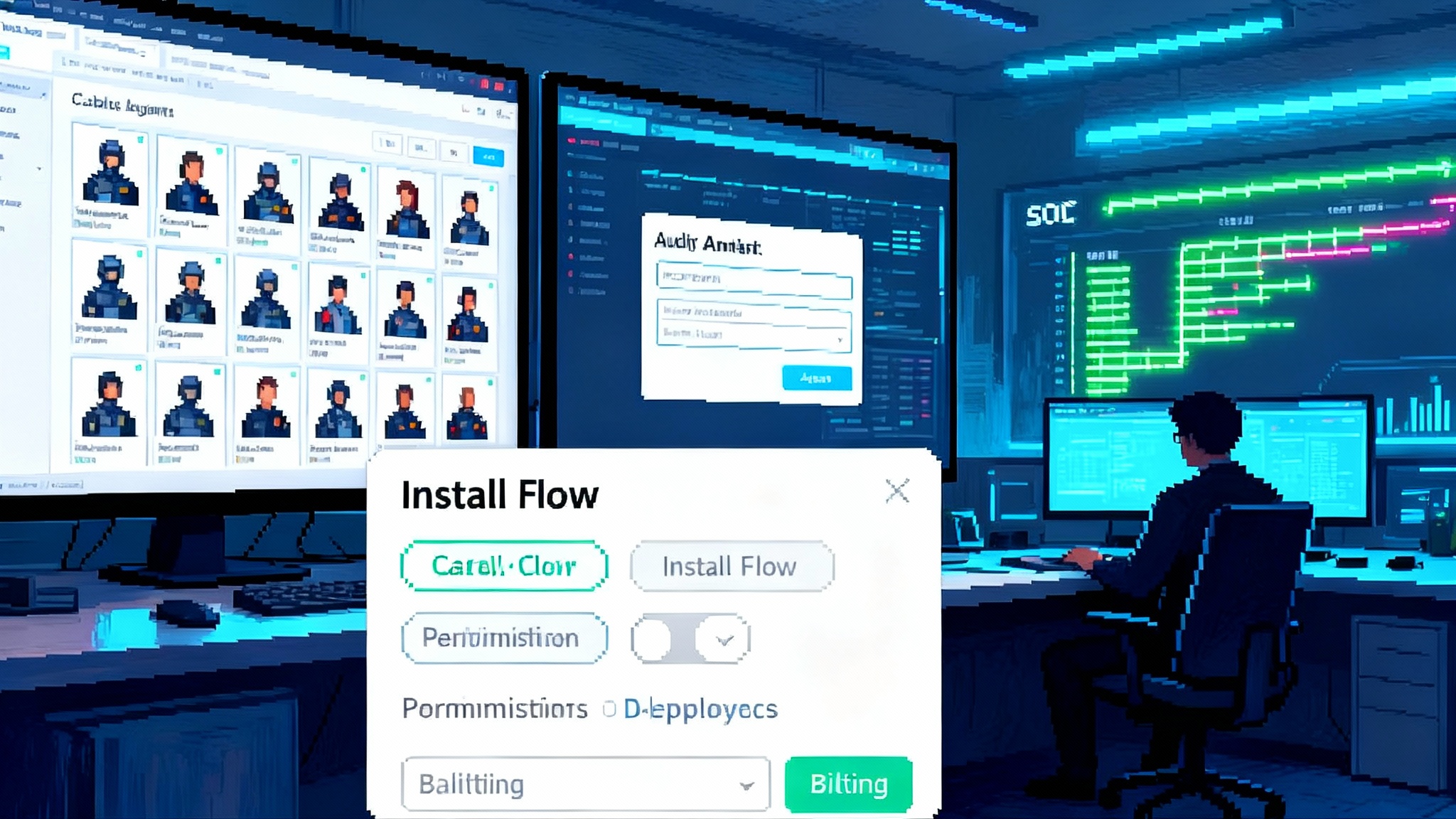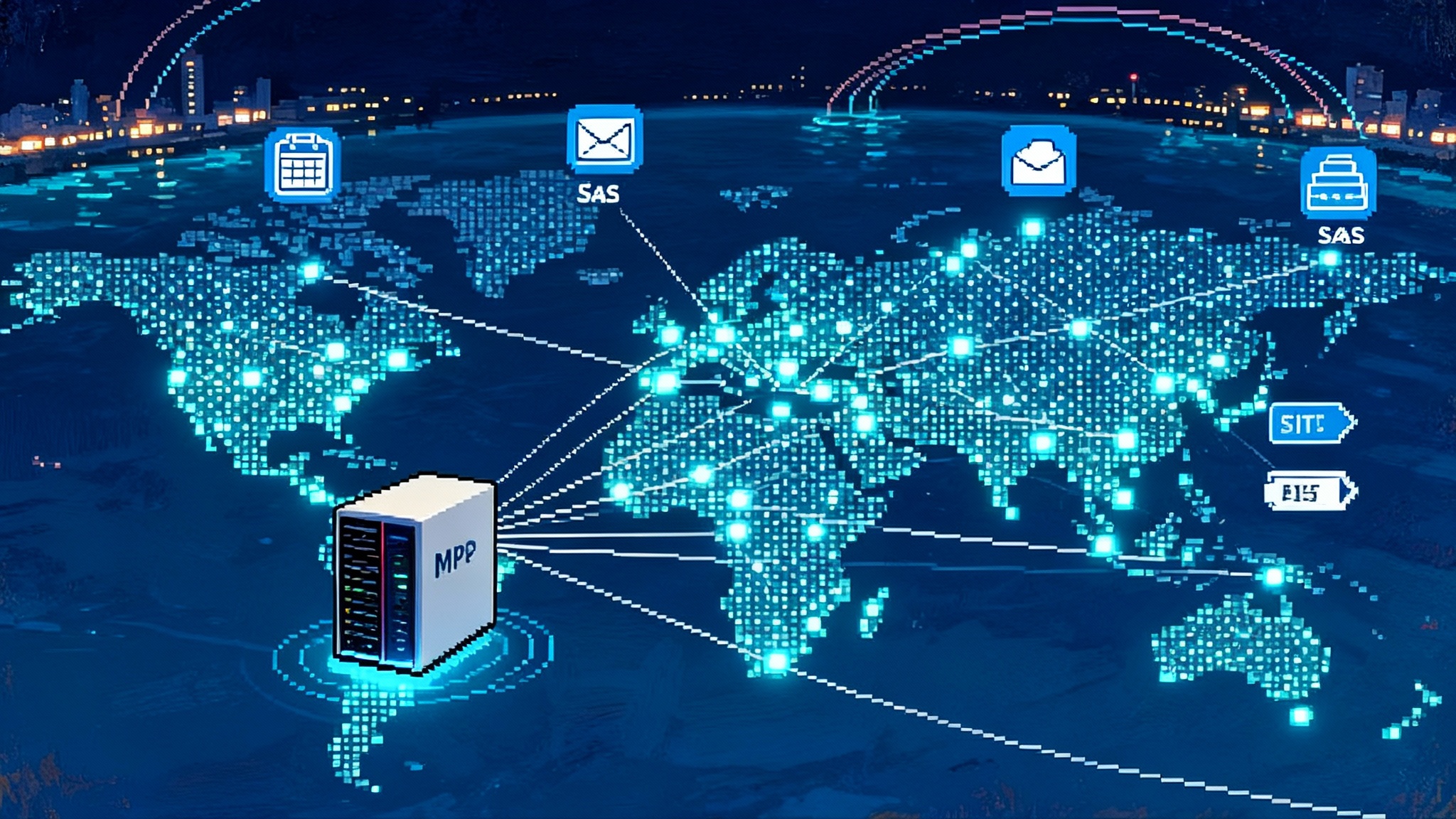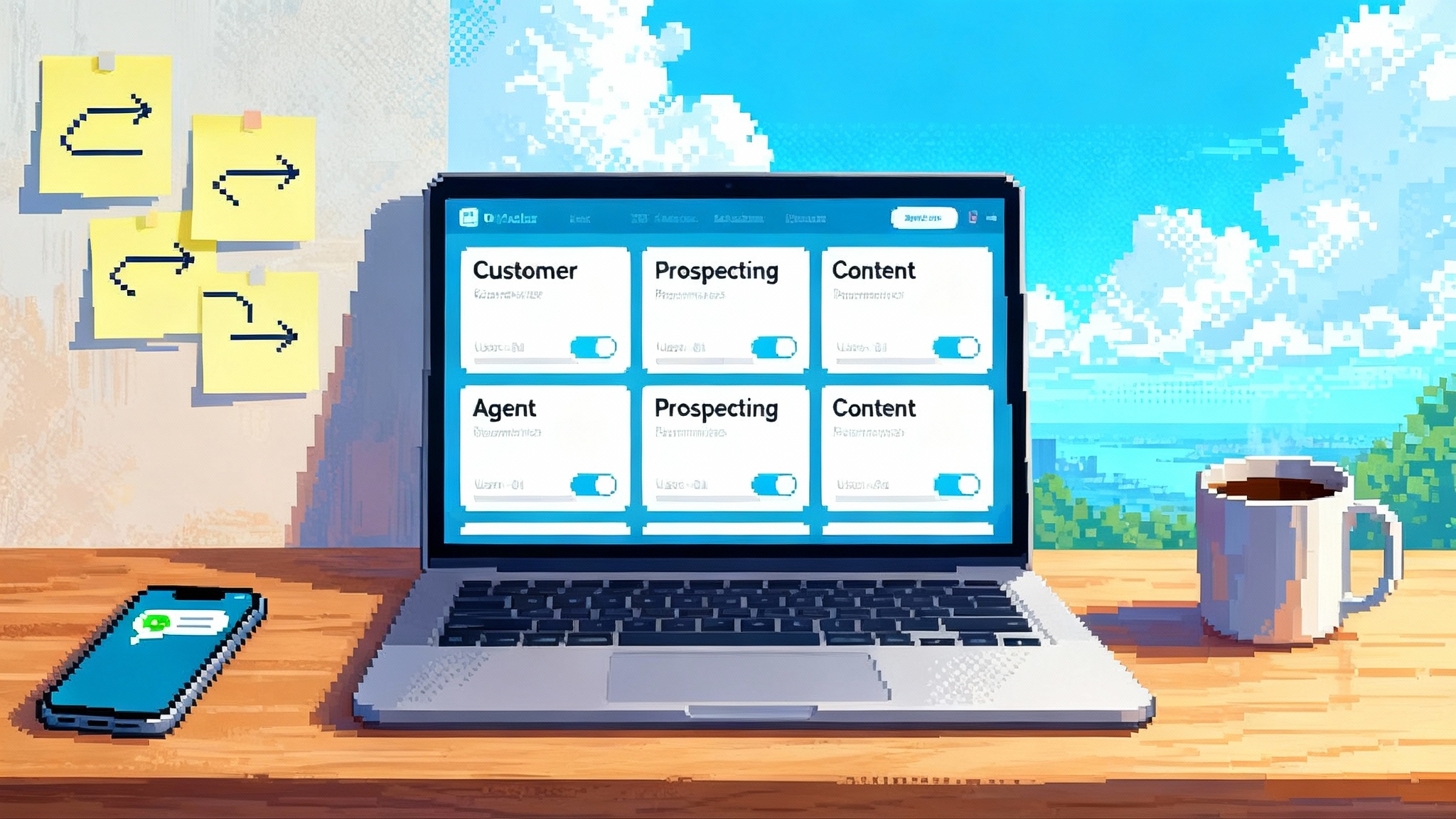ChatGPT Becomes a Storefront: Inside ACP and Instant Checkout
OpenAI and Stripe just turned ChatGPT into a real storefront. We explain how the Agentic Commerce Protocol works, what Instant Checkout changes for merchants, and a week by week playbook with KPIs to launch a pilot now.

The breakthrough in one sentence
OpenAI just turned ChatGPT into a place where people can actually buy things, not only find them. On September 29, 2025, OpenAI launched Instant Checkout in ChatGPT, powered by a new open standard called the Agentic Commerce Protocol co‑developed with Stripe. The feature is live for U.S. ChatGPT users and begins with U.S. Etsy sellers, with support for more than one million Shopify merchants coming soon. If you want the canonical overview, read the OpenAI product post on Instant Checkout.
Executive summary
ChatGPT now supports end to end purchases without sending shoppers to a separate website. The underlying Agentic Commerce Protocol, built with Stripe, defines how agents, merchants, and payment providers exchange product, pricing, shipping, identity, and payment information in a safe and consistent way. Merchants stay the merchant of record and continue to use their existing payment rails. In practice, that means AI agents can recommend a product and complete checkout within seconds while the merchant remains in control of inventory, taxes, compliance, and support.
If you are an enterprise retailer, the play is simple. Start with a narrow pilot inside ChatGPT, integrate ACP’s product feed and checkout endpoints, adopt delegated payments, and instrument the flow like any first class channel. Use the KPI set in this article to decide whether to scale.
Why this matters right now
Until now, most agent experiences stopped at advice. They told you which ceramic mug to buy or which trail shoes match your gait, then tossed you back into web forms and password resets. Agentic commerce erases that jump cut. With Instant Checkout, the agent stays with the buyer through decision and completion, while the merchant keeps control of payments, orders, and the customer relationship. That last part is the quiet revolution. Instead of yet another marketplace taking over your catalog and cash flow, ACP is designed so the merchant remains the merchant of record and processes payment on familiar rails.
Think of ACP as air traffic control for purchases. It gives buyers, AI agents, merchants, and payment providers a shared language to coordinate a safe landing. This is not marketing fluff. It is a set of schemas, endpoints, and webhook events that negotiate product availability, final pricing, taxes, shipping, payment credentials, and order state in a consistent way.
What ACP standardizes
Most of the pain in agent commerce is not the recommendation. It is the last mile.
- Product feed specification. Merchants provide a structured feed so ChatGPT can index products with authoritative price, inventory, options, and compliance notes. Treat this like a real time contract about what you sell and what you promise to ship.
- Agentic Checkout specification. Merchants implement a small set of REST endpoints to create, update, and complete a checkout session. Each response returns the full, authoritative checkout state, not a partial delta. This design keeps the agent’s view and the merchant’s ledger in lockstep.
- Webhooks for order events. The merchant emits lifecycle events like order created and order updated so the agent never acts on stale information.
- Delegated payments. Instead of the agent storing or replaying raw credentials, a payment service provider issues a single use, constrained token valid for a specific merchant and amount. This is safer for users and simpler for merchants because settlement, refunds, taxes, and chargebacks stay on your rails. See the Stripe documentation for the protocol for details on shared tokens and delegated payment flows.
The dividing lines are clear. The agent helps the user choose. The merchant decides whether to accept the order and processes payment with their existing provider. Post purchase, the merchant handles shipping, returns, support, and receipts. That clarity gives enterprise teams space to plug in governance without jerry rigging exceptions.
What this unlocks for enterprise catalogs
Enterprise catalogs are living systems with seasonal assortments, regional price books, warehouse constraints, and compliance flags. ACP turns that complexity into a predictable interface that agents can consume.
- Real availability, not scraped guesses. Your feed is the source of truth. Price and stock changes flow into the agent as soon as your feed updates. That eliminates the whiplash where shoppers pick an item that an AI suggested only to learn it sold out.
- Merchandising rules travel with the data. Size charts, restricted shipping states, age checks, region locks, and return windows are modeled explicitly. If California Prop 65 warnings or lithium battery limits apply, your checkout responses include those messages so ChatGPT can display them.
- Variant integrity. Agents often fumble options like color and fit. With ACP, variants are first class. The checkout session carries exact SKUs, so the size and shade the user confirms is the one you fulfill.
- Global catalogs by design. Because ACP treats the merchant as the authority, you can localize assortment and pricing and let the agent surface region correct products rather than guessing from a single feed.
Related context from adjacent ecosystems shows the same pattern. Edge platforms are becoming agent aware, as we covered in Cloudflare Remote MCP at the edge. Agent engines are adding guardrails and handoffs, as in Vertex AI Agent Engine updates. And enterprise workbenches are gaining audit trails that match compliance needs, as in auditable agent workbenches in Office.
Identity, payments, and compliance without the mess
Identity. The agent brings user context to the edge of checkout, but control remains with the user. Every sensitive step requires explicit confirmation. Merchants can request only the fields they actually need, and the agent passes them with permission. This narrows your data footprint and reduces friction.
Payments. Instead of vaulting new credentials or inserting a marketplace in the middle, ACP uses delegated payments. Stripe’s implementation introduces a shared payment token scoped to a specific merchant and cart total, then relayed by the agent when the buyer confirms. The token never reveals raw card numbers and expires quickly if unused. If you use another provider, you can still participate by adopting the delegated payments spec and passing compatible tokens into your existing authorization flow.
Compliance. The protocol is designed so the merchant continues to own the regulated parts of the transaction. Your payment provider handles strong customer authentication where required, your tax engine calculates and remits amounts, and chargebacks remain visible in your normal workflow. If you operate your own vault, you integrate at the delegated payment layer. If you use a third party gateway, you still process on your rails while the agent stays out of scope for raw credentials.
Security. ACP emphasizes signed requests, idempotency keys, and authoritative webhooks. The agent does not proceed on unauthenticated inputs. Because the checkout state is returned in full on each call, the agent can render consistent totals and messages even across retries.
A practical playbook to ship an agentic storefront this quarter
You can go live in one quarter if you treat this like a focused product launch, not a side quest. Below is a week by week plan for a mid to large retailer. Adjust scope to your catalog size.
Week 1: Set the target and secure buy in
- Executive sponsor, product lead, and payments lead sign a clear scope. Target is a pilot inside ChatGPT with 100 to 300 high margin items and standard shipping. No custom promos in phase one.
- Join the Instant Checkout program and confirm eligibility windows and certification requirements with your partner contacts.
- Identify your payment path. If you are on Stripe, plan to adopt shared payment tokens and leave settlement as is. If you are on another provider, map the delegated payment flow with that provider and confirm token constraints they support.
Week 2: Build or harden your product feed
- Start with a stable slice of your catalog. Include hero images, variant matrices, full price and compare at price, inventory buckets by SKU, and shipping eligibility by region.
- Normalize attributes. Agents are literal. Use consistent names for color, material, and size. Validate that your feed includes hazard and age restrictions where appropriate.
- Add quality gates. Reject feed rows that fail image resolution or drop required fields. Publish a feed error rate dashboard.
Week 3: Implement the checkout endpoints
- Build create, update, and complete checkout session endpoints with input validation, signature verification, and idempotency.
- Always return full authoritative state. Include line items, totals, shipping options with prices, taxes, and user facing messages. If a discount code is invalid, say why and how to fix it.
- Emit order events on a webhook to keep the agent synchronized. Use retries with exponential backoff and audit logs for each event.
Week 4: payments on your rails
- Integrate delegated payments. If using Stripe, configure acceptance of shared payment tokens on your existing payment flow. If using another provider, implement their equivalent delegated token flow and map constraints like maximum amount and expiry.
- Simulate edge cases. Test expired tokens, partial captures, soft declines, and fraud reviews. Confirm your 3D Secure and network tokenization policies still apply.
Week 5: Legal, tax, and customer care
- Update terms of sale and privacy policy to include agent based transactions. Ensure receipts identify you as the merchant of record and include support contact paths.
- Confirm tax calculation across the pilot states and categories. Verify that warnings such as California Prop 65 render in the agent cart based on your checkout messages.
- Train support on channel identification. Tag tickets that originate in ChatGPT so you can compare resolution time and return rates.
Week 6: Observability and certification
- Instrument every call. Log request identifiers, idempotency keys, response times, and the computed totals you return. Build red light monitors for signature failures and state mismatches.
- Run certification. Expect conformance checks for schema correctness, error codes, rate limits, and webhook delivery.
Week 7: Pilot rollout
- Start with staff accounts, then a small percentage of organic traffic. Keep the pilot invite only until you stabilize payment success rate and order acceptance.
- Add catalog breadth gradually. Begin with single item purchases and standard shipping only. Defer mixed carts and complex promos until metrics are solid.
Weeks 8 to 10: Scale responsibly
- Expand to more categories and introduce basic promos with caps. Confirm that discounts are reflected correctly in totals and that delegated payment amounts cover the post discount total.
- Prepare for seasonal spikes. Load test your endpoints with slow downstream dependencies to verify graceful degradation and accurate error messages.
KPIs that matter as agentic commerce scales
You do not need a new religion of metrics. You need a channel specific layer on top of your existing ecommerce dashboard. Define owners and instruments for each KPI before you scale the pilot.
- Discovery to product view rate. Of all shopping queries in ChatGPT that include your catalog, what share produces a product detail view in chat. Owner: merchandising. Target: track week over week growth.
- Add to cart rate in chat. Product views that progress to a cart within the chat. Owner: product. Target: within 75 percent of your web add to cart rate by end of quarter two.
- Order acceptance rate. Percentage of agent created orders that your system accepts. Keep this above 98 percent. Drops suggest stock or eligibility mismatches in your feed or rules.
- Payment success rate on first attempt. Measure tokenized payments that authorize on first try. Aim for parity with your web checkout. If lower, inspect token constraints or 3D Secure policy interactions.
- End to end checkout time. Median seconds from user pressing Buy to payment confirmation. Sub 15 seconds feels instant in chat. Optimize network calls, not copy.
- Agent confirmation drop off. The share of users who abandon at the explicit confirm step. If above 10 percent, improve the final confirmation message and ensure totals and shipping estimates are clear and stable.
- Refund and chargeback rates by channel. Compare to web and app. Outliers hint at poor expectations in the agent cart or fraudulent usage patterns.
- Post purchase support deflection. Ratio of orders resolved through self serve flows to total orders that contacted support within 7 days. The agent channel should be at least as good as web.
- Catalog freshness SLA. Percentage of products whose price and inventory were updated in the last X minutes. Tie your feed error rate to this SLA and page on breaches.
- Repeat purchase rate via ChatGPT within 60 days. This shows whether agentic commerce is sticky or a novelty.
Define thresholds, a daily standup cadence, and a stop rule that throttles exposure if payment success, acceptance, or chargebacks stray outside guardrails.
Architectural sketch you can hand to engineering
Here is a conceptual flow that reflects ACP’s model:
- The user asks for a product in ChatGPT. The agent retrieves candidates from its index based on your product feed.
- The user picks an item and taps Buy. ChatGPT calls your POST create checkout session endpoint with initial items and buyer context.
- Your service responds with authoritative cart state. Include line items with computed prices, taxes, shipping options, and any user messages such as eligibility or warnings.
- The user selects shipping and enters any codes. ChatGPT calls your POST update checkout session endpoint. You recalculate and respond with full state again.
- On final confirmation, the agent requests a delegated payment from the payment provider. The provider returns a scoped token.
- ChatGPT calls your POST complete checkout session endpoint, passing the token and the selected options. You authorize and capture on your rails.
- You emit an order created event to the ACP webhook endpoint. The agent displays the order number and tracking promises.
- You emit subsequent events for shipped, delivered, refunded, or canceled so the agent can notify the user.
This division keeps the agent out of your internal systems while giving it enough truth to present a trustworthy checkout.
What could go wrong and how to avoid it
- Duplicated listings. If multiple sellers offer the same item, ranking disputes are inevitable. Your best defense is feed quality and accurate availability. Low acceptance rates will naturally demote your offers.
- Stale tax or shipping quotes. If totals change between update and complete, users will drop. Always recompute totals server side and return full state. Refuse to complete if your state is older than a few minutes.
- Token mismatches. If delegated tokens are sent for amounts that do not match your computed total, decline and include a clear message. Monitor these events and coordinate with your payment provider.
- Restricted categories. Build proactive rules to hide SKUs with age gates or shipping prohibitions in the feed rather than relying on checkout time errors.
- Returns confusion. Include the exact return policy and window in your checkout response links. Tag agent channel orders in warehouse systems so support and operations can trace them.
What this means for platforms and marketplaces
If you are Shopify or Etsy scale, ACP turns you from a site into a channel service. You expose a standardized feed and checkout to agents and still use your existing rails for payments and post purchase. That lets you join agent surfaces without replatforming or ceding the customer. It also suggests a future where many agents, not just one, can sell your merchants’ products as long as they speak ACP.
A grounded path forward
Agentic commerce will not replace your web and app funnels overnight. But Instant Checkout makes agents measurable and monetizable today. The protocol keeps merchants in control and gives enterprise teams a spec to follow rather than a vague hope. Start with a narrow pilot, instrument it like a product, and grow only when payment success and acceptance rates match your current channels. The winners will be the companies that treat agentic storefronts as first class surfaces, not a novelty experiment.
In other words, the chat window just became a storefront you do not have to rebuild. The protocol lets you bring your catalog and your rails. The remaining work is focus and execution.








